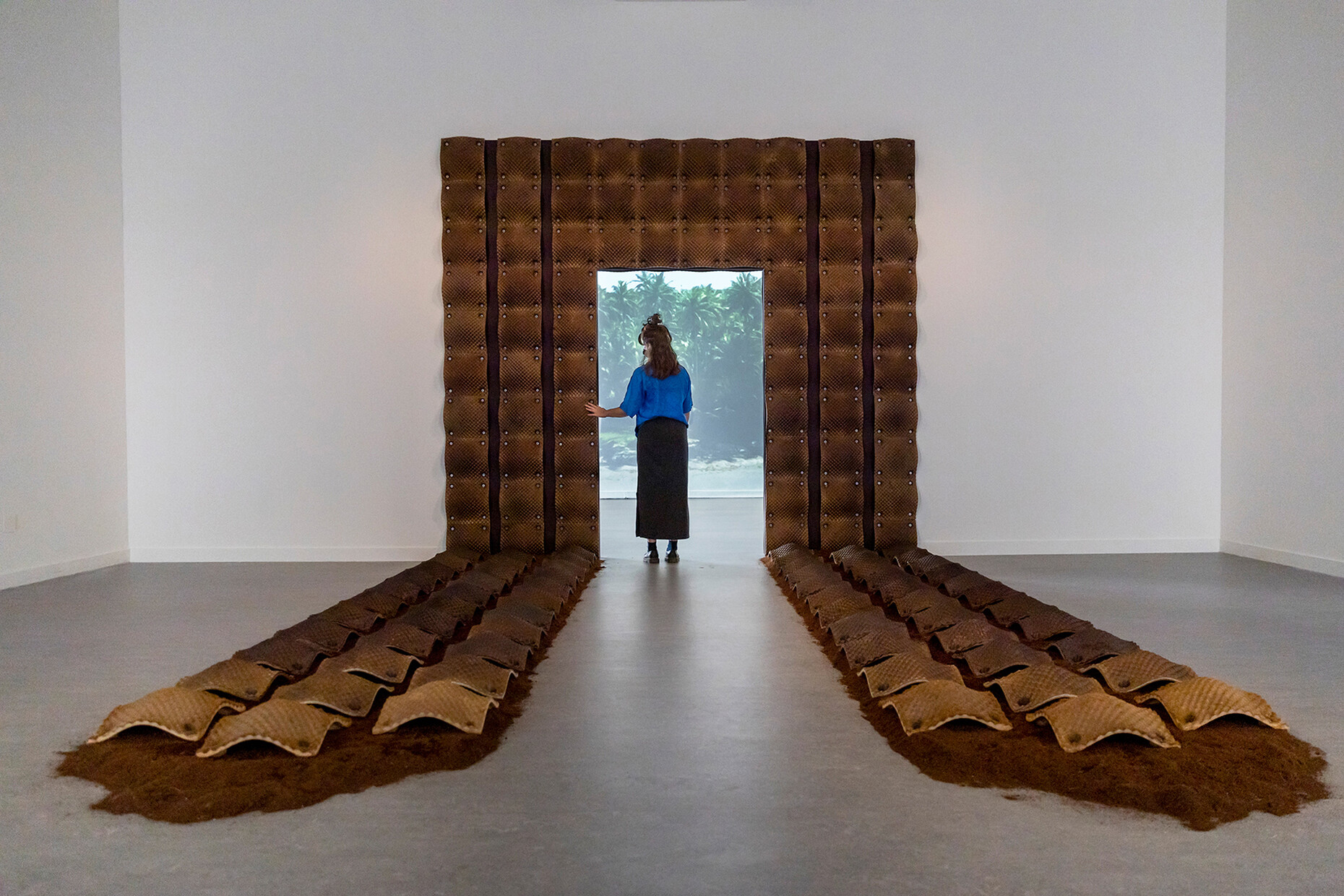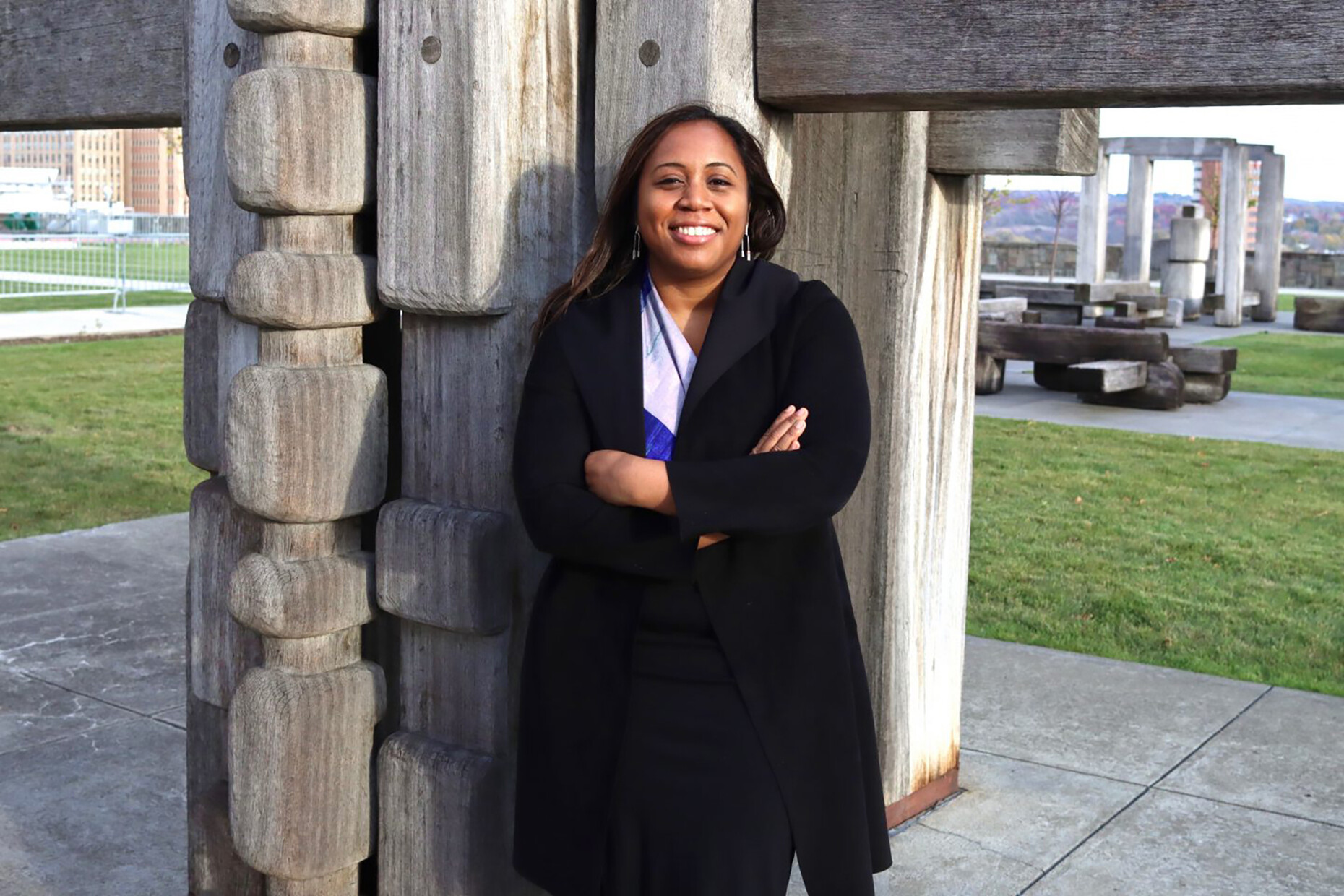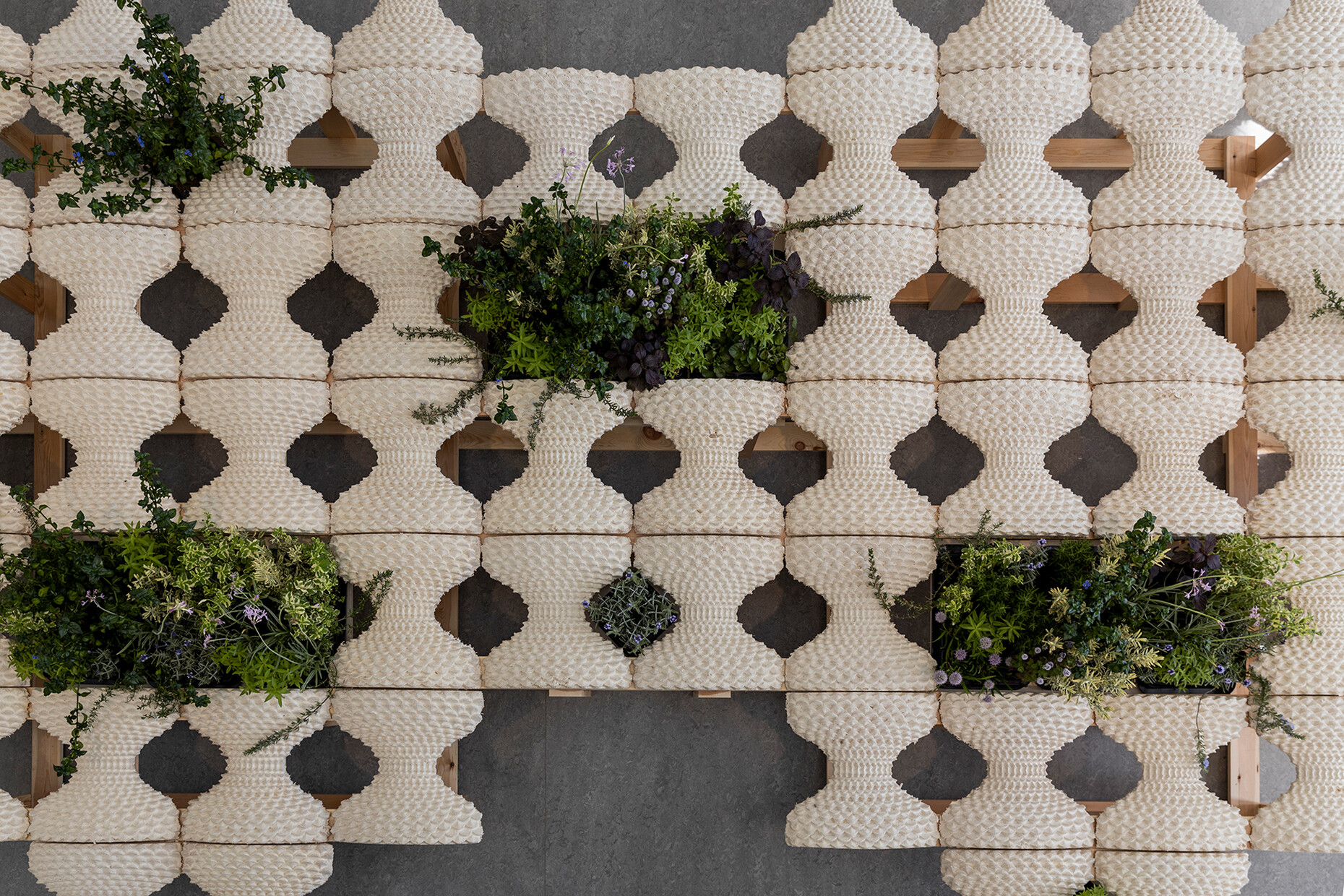New Rituals of Transformation
Though Mae-ling Lokko takes things at face value she also immediately recognizes if they have totally different potential: she sees what they could be. Her approach lacks idealization, she works solely with the possibilities that are inherent to things. It was already possible to see what sensual outcomes this produces in Berlin back in 2019. Mae-ling Lokko was invited to develop new speculative concepts for a desirable near future – as part of an interdisciplinary collaboration named Housing The Human aimed at creating methods for a practical futurology. The architectural scholar, designer and professor at the Yale University’s School of Architecture was an excellent choice: Her Agrocologies are constantly changing visual objects that are skimmed off during the project phase and put to immediate use. Bowls, plates, containers formed from existing kitchen utensils, even chairs, a sink and a wall panel were made from mycelium and fed with biomass from farms and the festival show kitchen. At Happy Hour there were drinks and dishes made from ingredients that would later also enrich the fungus-based raw material. Lokko described what was celebrated here during the project’s duration by two performers as “rituals of waste transformation”. In the video accompanying the presentation she explains that the performance is an invitation “to think about our responsibility as individuals and about transforming the waste in our own homes.”
Lokko’s practice operates at the interface between design and art, research and practice, teaching and research, ideas about architecture and agriculture. It follows that her work can be found in a wide range of different forms: As a university research project or a museum exhibition, as a design prototype, lecture or participatory event. She regularly addresses the questions of what else could be created from our household waste. She also explores agricultural cycles for potential that is not immediately apparent or recorded. Take coconut cultivation in Ghana. Mae-ling Lokko who was born in Saudi Arabia to a mother from the Philippines and a father from Ghana spent a fairly long period of time in the country with the smallholder farmers who help satisfy the world’s hunger for this lifestyle food. Lokko recorded her observations in the “Coconut Diaries”. Not only did she focus on the cultivation itself and the local growing conditions but also the social ties involved and the impact of colonial exploitation. And once again she found a bit player with immense potential: coconut fiber.
Coconut fiber is a permanent by-product of coconut production on small plantations. Mae-ling Lokko not only thought about what could be made from the raw material but also imagined how local smallholder farmers could profit from it without there being any middlemen – in collaboration with local agricultural cooperatives this would even be possible on a larger scale. Once again fungi came to her aid, virtually upgrading the coconut fibers and transforming them into an even more valuable material. And the result can be experienced as a number of products: exceedingly sturdy fiber panels that are both lightweight thanks to the material’s low density but also highly versatile adapting to a wide range of formats and uses. (In various exhibitions Lokko has already shown how easily the material can be shaped.). And it is ideally suited to the hot and humid climate in Accra. A sustainable construction material in the best sense of the word whose production is relatively inexpensive and does not involve huge amounts of energy, that can be easily adapted to different settings and climate zones and can also be quickly composted if need be.
Although Lokko’s works naturally resonate in contexts like upcycling or the development of socially and ecologically sustainable construction materials such buzzwords alone do not full justice to her practice. The designer and architectural scholar wants to do more. What if it is no longer just a matter of designing building materials for the construction phase alone but if the ultimate goal of turning what has been built back into earth at some point is already inherent in the material itself? In shaping the change that is being invoked everywhere right now it obviously cannot be about simply embellishing the status quo. Mae-ling Lokko’s notion of a turnaround is fundamental even though when looking at her easily comprehensible, seemingly simple works that always involve people it is not always necessarily apparent just how radical they are.














